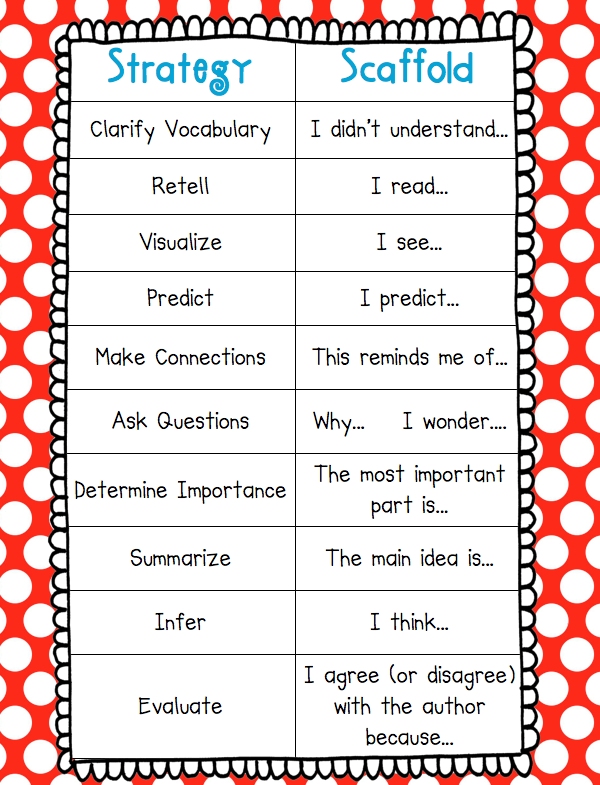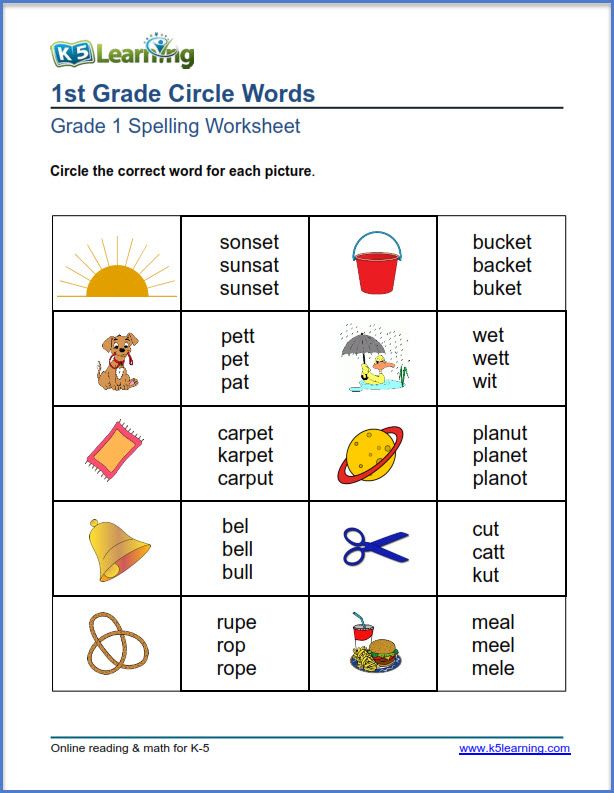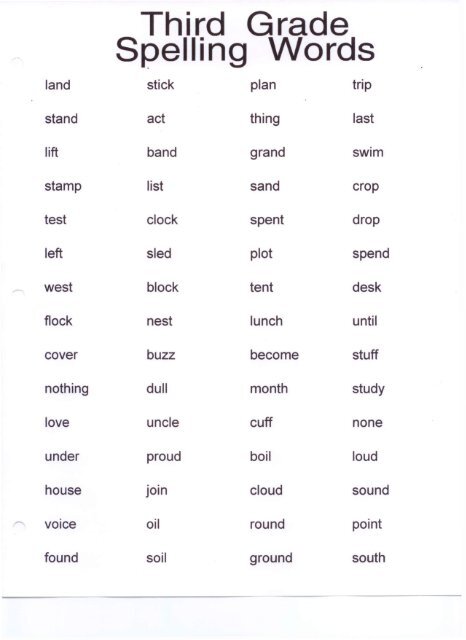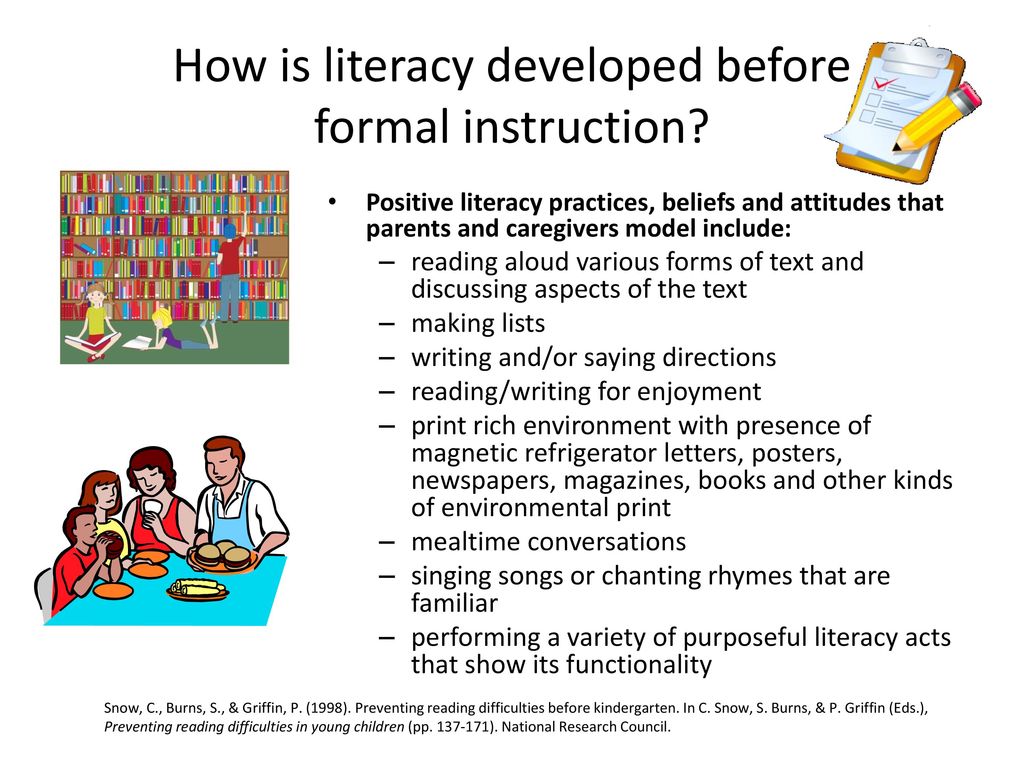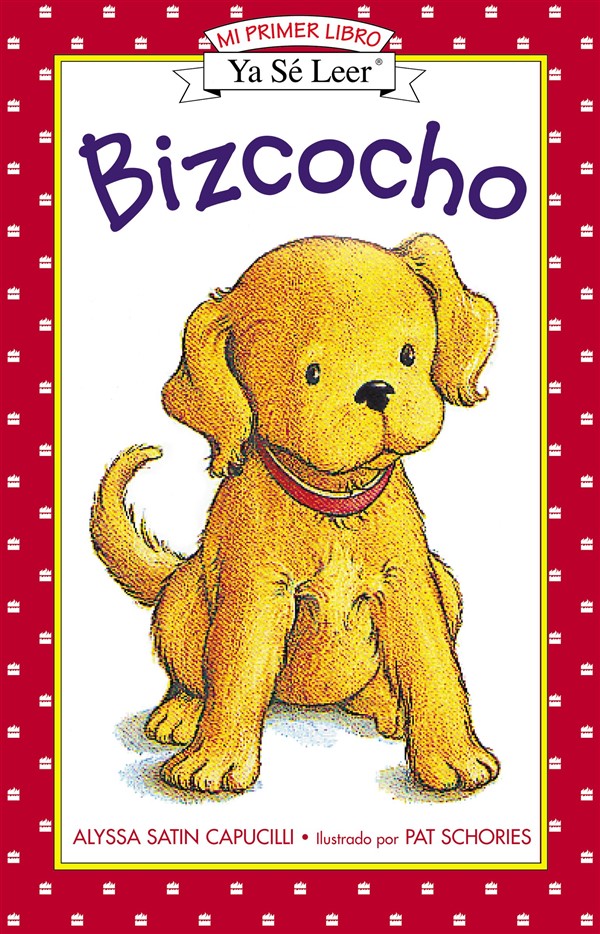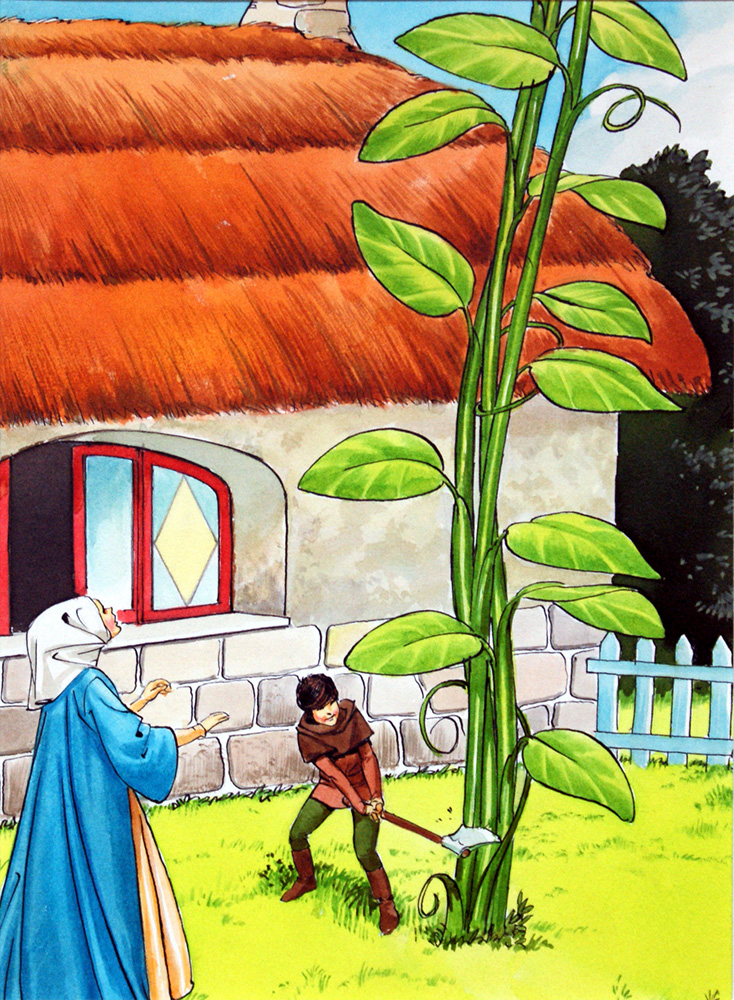Reading strategies predicting
Predicting - Reading Strategies & Misconceptions
| Predicting is an important reading strategy. It allows students to use information from the text, such as titles, headings, pictures and diagrams to anticipate what will happen in the story (Bailey, 2015). When making predictions, students envision what will come next in the text, based on their prior knowledge. Predicting encourages children to actively think ahead and ask questions. It also allows students to understand the story better, make connections to what they are reading, and interact with the text. Making predictions is also a valuable strategy to improve reading comprehension. Students are able to make predictions about a story, based on what they have already heard, read, or seen. This in turn, will allow students to become actively involved in the reading process. To determine if their predictions are correct, students should be required to reread portions of the text to recall facts about the characters or events within the story. Students can also use a graphic organizer to predict the outcome of a story. They can do this by identifying clues within the text to predict how characters will behave and how significant problems in the story will be solved. When using a graphic organizer, students are able to stay fully engaged in the story as they capture their thoughts in a logical way. It is important for teachers to encourage children to record clues that either support or deny their predictions. Teachers can also allow students to revise their predictions in order to reflect on the clues that are found within the text. Making predictions encourages readers to use critical thinking and problem solving skills. Readers are given the opportunity to reflect and evaluate the text, thus extracting deeper meaning and comprehension skills.  Students will also be more interested in the reading material when they connect their prior knowledge with the new information that is being learned.
Students will also be more interested in the reading material when they connect their prior knowledge with the new information that is being learned. |
How to Predict
Video - Background Information |
| Reading There are several activities that teachers can incorporate within their classroom, allowing students to effectively make predictions. | Math Students can make predictions based on patterns. When looking at a problem or example, students will be able to recognize different designs/outlines through repetition and observation. Predicting can be used in science when students conduct an experiment. For example, students may be studying a unit on plants and must predict what will happen to a plants growth if the amount of water is increased. Based on their observations and trials, students will be able to predict what will happen next as they gather data and support their answer with evidence. |
Resources:
Bailey, E. (2015). Reading Comprehension Skills: Making Predictions. Retrieved June 13, 2015, from http://specialed.about.com/od/readingliteracy/a/Reading-Comprehension-Skills-Making-Predictions.htm
Michel, J. (n.d.). Booksource. Retrieved September 18, 2015, from http://www.booksource.com/Departments/Resources/Teaching/reading-comprehension.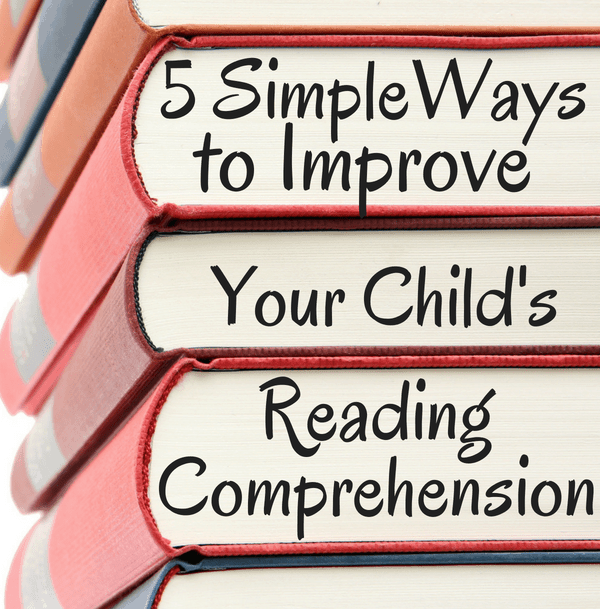 aspx
aspx
Brock, A. (2013, September 29). Reading Strategy: Prediction. Retrieved June 13, 2015, from https://www.youtube.com/watch?v=nsLD33rczFA
Raudenbush, D. (n.d.). Strategies for Clarifying a Prediction in Reading Comprehension. Retrieved September 18, 2015, from http://everydaylife.globalpost.com/strategies-clarifying-prediction-reading-comprehension-14740.html
How To Teach Students to Make Predictions While They Read — THE CLASSROOM NOOK
Love podcasts? Check out this post in form of a podcast episode on The Classroom Commute
Proficient readers make predictions naturally, without even knowing it. They predict what a book will be about based on the title, they predict why characters act a certain way, and they guess what will happen next when they get to the end of a chapter.
It’s important that teachers help teach young students to use this same reading comprehension strategy as well.
But - it takes explicit teaching for students to begin doing this on autopilot.
Predicting helps keep the reader’s mind engaged and activated as he or she works through a text. When students actively predict while reading, they stay connected to the text and can reflect upon, refine, and revise their predictions.
Let’s dive in to how to model, practice, and assess this reading comprehension strategy with your students.
Pssst…Want a super engaging and interactive way to have students practice predicting?
LINKtivity® Interactive Guides are EXACTLY what you need to make learning fun & accessible for all!
Get access to the Predicting LINKtivity® (+a growing library of LINKtivities!) inside of LINKtivity® Learning - an all-access pass to our entire vault of LINKtivities!
click here to Learn more
Below are the different categories within this post to help you jump to exactly what you need! Click on each category title to navigate there directly:
<< Back to categories
Predicting requires the reader to do two things: 1) use clues the author provides in the text, and 2) use what he/she knows from personal experience or knowledge (schema). When readers combine these two things, they can make relevant, logical predictions.
When readers combine these two things, they can make relevant, logical predictions.
When students make predictions, we want them to be able to justify their thinking. In their predictions, we want to hear students drawing from both the text and their own schema. Asking students to justify their predictions, keeps them accountable for their thinking and helps them take their thinking deeper.
Readers should make predictions before, during, and after reading. There are several different kinds of predictions that a reader can make with a text. Readers can:
predict what the book will be about (Reader use titles and cover illustrations, etc.)
predict the author’s purpose (Is the author trying to convince us of something? Does the author want to teach us something? etc.)
predict future events in the book (Reader bases these predictions on previous events or character words and actions)
predict why an author included a specific text feature (What does it teach us? What information does it help clarify?)
predict what they will learn from the text or section within a text (Reader uses titles, headings, and subheadings to inform predictions)
predict what would happen next at the end of the book if it were to continue
Predicting involves more than just trying to figure out what will happen next. In fact, predicting requires students to draw on a variety of other secondary skills. As students look for evidence for their predictions, they also ask themselves questions, reread the text, recall information given in the text, infer, and draw conclusions.
In fact, predicting requires students to draw on a variety of other secondary skills. As students look for evidence for their predictions, they also ask themselves questions, reread the text, recall information given in the text, infer, and draw conclusions.
Making predictions helps set the stage for students to monitor their own comprehension. Making predictions naturally encourages the reader to want to continue reading in order to find out if their predictions were correct or not. By making predictions and then reading on to see if those predictions were correct helps to let the students know if their thinking was on the right track. Using the prediction strategy correctly, truly will result in comprehending the text more fully.
<< Back to categories
The concept of predicting will most likely not be new to students. Activating this skill while reading, however, may require some practice. Since students may not be stopping to make predictions as they read, explicit instruction to train students to do so is essential.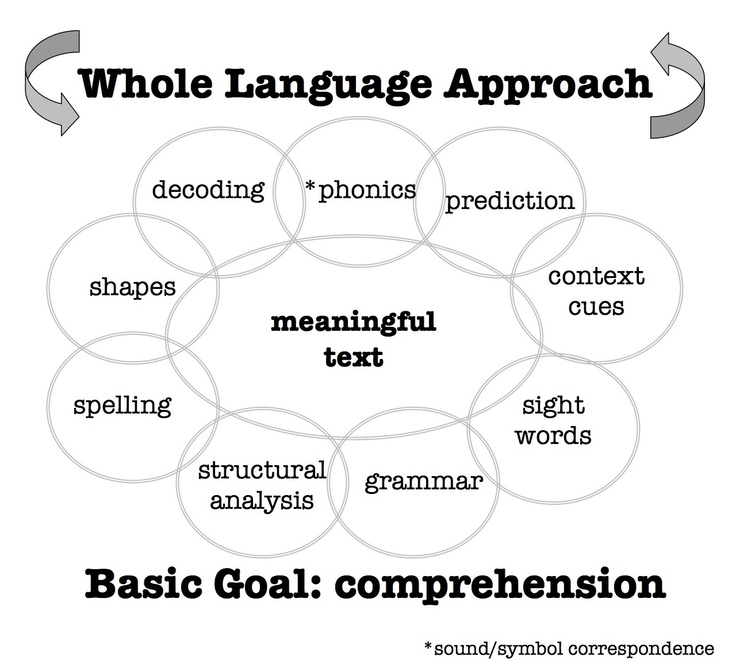
You can introduce this reading comprehension strategy with a simple exercise. Tell students that you are going to play a quick game that will require them to guess what you are going to do next in your school day.
Explain that you are going to leave and re-enter the room, providing clues as to what you are going to do next. Here are two example scenarios that you might use:
When you re-enter the room, grab a soccer ball (or other playground equipment), put on your coat, and grab your whistle. Have students predict what you are going to do next (go out for recess).
When you re-enter, go to your desk and pull out your current read-aloud book and have a seat where you normally share your read-aloud with the class. Have students predict what you are going to do next (read-aloud to the class).
In either case, have students share out the clues that they used to make their guesses. Explain that when students made a guess as to what you were doing next, they were making predictions.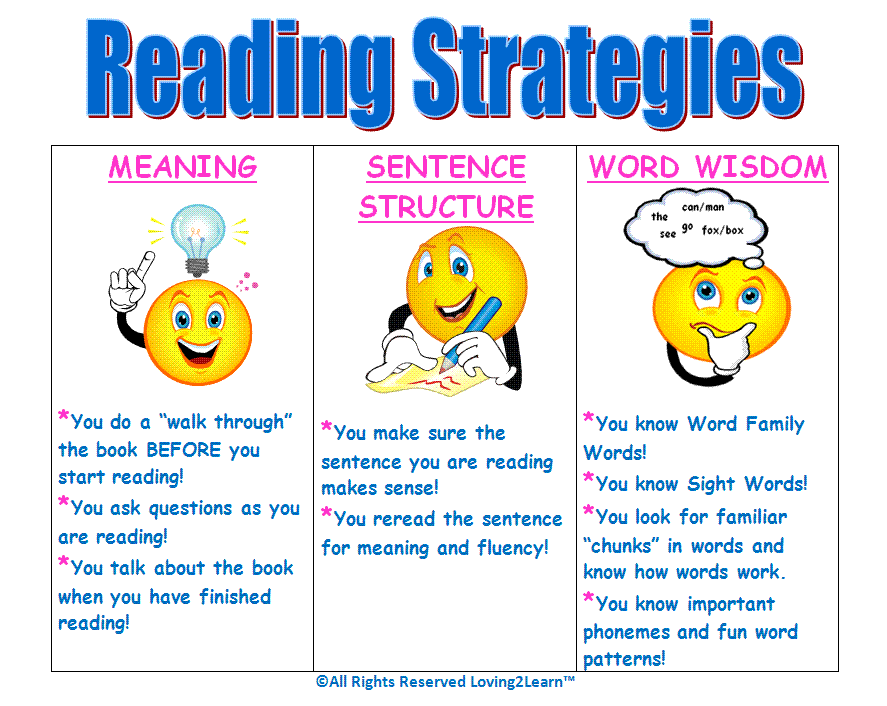 Tell students that readers make predictions all the time in the books that they are reading by using clues that the author gives them, and by using their own personal knowledge. In the scenarios above, the students used the clues from your actions plus their knowledge from past experiences to make their guesses as to what you were going to do next.
Tell students that readers make predictions all the time in the books that they are reading by using clues that the author gives them, and by using their own personal knowledge. In the scenarios above, the students used the clues from your actions plus their knowledge from past experiences to make their guesses as to what you were going to do next.
<< Back to categories
Once students are in the mindset of making predictions, you can begin modeling through a read-aloud. Picture books work well, even with older students, to help model this strategy from start to finish.
To prepare for modeling this strategy, choose a text that works great with making predictions. (see book suggestions at the end of this teacher guide). Preview the text and plan for places that you will stop to model making predictions. If desired, write your predictions on Post-it notes and place them on the pages where you plan to share your predictions.
Create an anchor chart, like shown below, to record your predictions together as a class. (Note: For younger students, you can simplify this chart by putting only writing “reflection” in the 3rd column)
(Note: For younger students, you can simplify this chart by putting only writing “reflection” in the 3rd column)
While reading your text to students, stop to discuss your predictions. Write your predictions on your chart (or place up your prepared Post-it notes) for students to see in the “My Predictions” column. Discuss WHY you made each prediction. Then, in the “Text Evidence” column, record evidence from the text that helped inform your predictions. As you read, fill out the “Revise, Refine, and Reflect” section for each prediction to note whether or not your predictions were correct, and how it informed your thinking. Explain that as you reflect on your predictions, sometimes you need to refine (make more clear), or even revise (change) your predictions based on new information that the author may give you. Here’s an example using the book Thank You, Mr. Falker by Patricia Polacco: (affiliate link)
When first starting out, it might be helpful to give students some thinking prompts to help guide their predictions.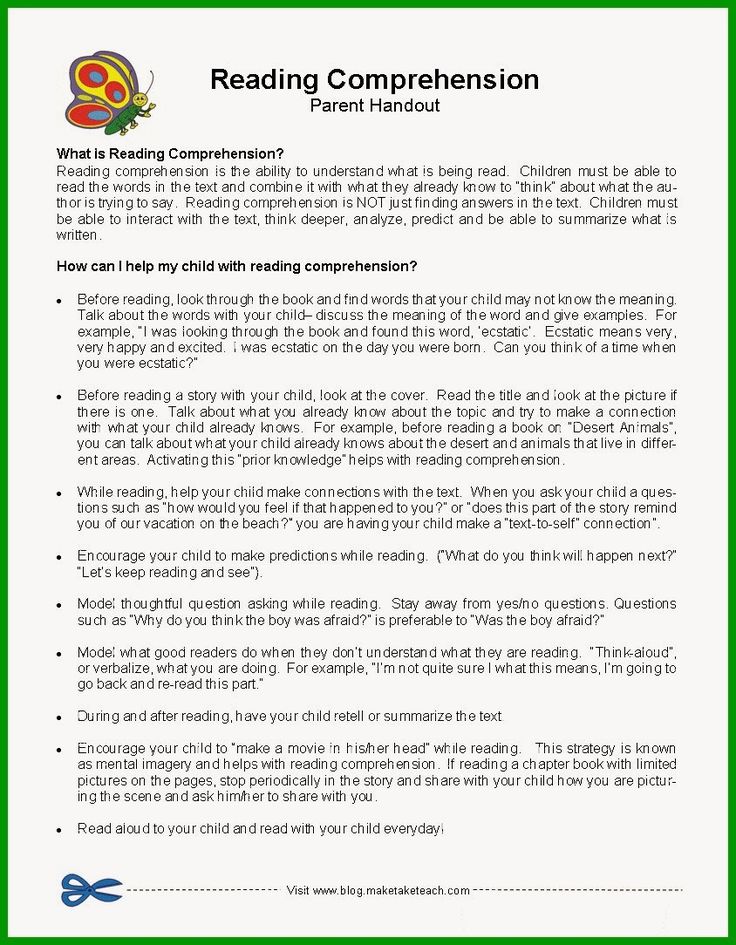 Here are a few examples:
Here are a few examples:
I think ________ will happen because _________
I bet _______
I’m guessing _______
Since ____ happened, I think that _______ will happen
I think the character will ___ because _______
I think I will learn ______
Another thing to focus on with students while making predictions is helping students make logical predictions that make sense. Again, you will need to model this specifically. Model both logical and not logical predictions. For example, when reading Thank You, Mr. Falker a logical prediction might be: “Since Tricia has been staying after school with Mr. Falker, I predict that she will finally learn how to read.” A prediction that is not logical would be: “I predict Tricia will read the book The Three Little Pigs.” The second prediction does not use any text clues to form the prediction. Although it is about Tricia reading, nothing in the text suggests that reading The Three Little Pigs would be a logical prediction.
Although it is about Tricia reading, nothing in the text suggests that reading The Three Little Pigs would be a logical prediction.
Struggling readers often make predictions that are not logical by simply choosing something remotely related to the topic or event in the book. This is why it is so important to help students rely on text evidence when making predictions as well as reflecting on each prediction. Help students to use phrases such as: “this prediction makes sense because in the text is says…” or “this is a logical prediction because.”
Model making predictions in both fiction and nonfiction texts. In fiction texts helps students to make predictions about what the book might be about, what might happen next, or what a character might say or do. In nonfiction, students can predict what they might learn from the text, what information will be included within headings and subheadings, the definition of new content words, or why authors include certain text features.
<< Back to categories
Of course we want students to be able to make predictions regardless or what book they are reading. However, as students have their first experiences working this this strategy, choose books that lend themselves to makgin predictions will help students to have a quick win, and easily see this strategy in action.
Be sure to choose a book that provide obvious opportunities for students make predictions. This will help set students up for success and will train their brains to stop and think about what is going on in the text in order to make logical predictions.
Here are some of my favorites to use when modeling predicting (affiliate links):
Two Many Tamales by: Gary Soto
Enemy Pie by: Derek Munson
Those Shoes by: Maribeth Boelts
What Do You Do With a Tail Like This? by: Steve Jenkins
<< Back to categories
CREATE SIMPLE VISUALS TO REMIND STUDENTS TO PREDICT
When first using a new reading strategy, students need constant reminders. Visuals such as bookmark to use while reading, or a classroom poster that is displayed on a reading strategy bulletin board work wonderfully to nudge students to make predictions while reading.
Visuals such as bookmark to use while reading, or a classroom poster that is displayed on a reading strategy bulletin board work wonderfully to nudge students to make predictions while reading.
Continue to create anchor charts displaying the predictions that you make during read-aloud texts. You can even create a class anchor charts where students post their own predictions about a book that you are reading together as a class.
8 FREE Reading Strategy Bookmarks
Grab these FREE student bookmarks to help your students use reading comprehension strategies while reading.
There are a total of 8 bookmarks that explain reading strategy in kid-friendly language and is the perfect reference for students to use during independent or small-group reading time.
Click here to get access
USE LINKtivity DIGITAL LEARNING GUIDES
New to LINKtivities? >> CLICK HERE
If you know me, even just a little bit, then you know I’m about to talk about LINKtivity digital learning guides.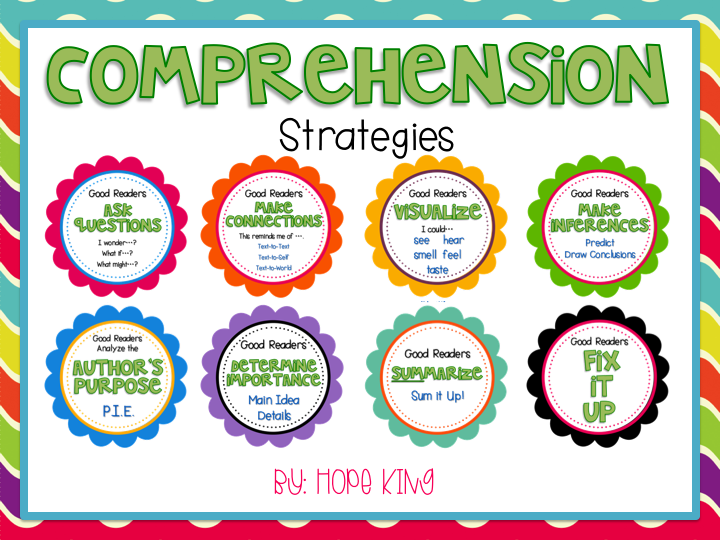 Why? Because LINKtivities are interactive, engaging, and so fun for learning and practicing new skills like reading strategies.
Why? Because LINKtivities are interactive, engaging, and so fun for learning and practicing new skills like reading strategies.
I created a LINKtivity® specifically for teaching students how to make predictions while reading. Watch the video below for a sneak-peek!
Here’s how it works:
In the Predicting LINKtivity, students first watch a short animated video clip that quickly catches their attention with fun doodles and images. The clip introduces what the strategy is and how readers use it.
From there they read alongside their “virtual reading buddy” to see the strategy applied to a text. While clicking through the digital book, each time the student comes across a thought bubble, they click on it and are brought to a new slide in the LINKtivity guide to see what their reading buddy is thinking!
Then, to take their learning to the next level, students read 3 additional high-interest reading passages to practice the strategy on their own. In a similar fashion as they did with their reading buddy, students click through the digital storybook and stop to make predictions along the way.
In a similar fashion as they did with their reading buddy, students click through the digital storybook and stop to make predictions along the way.
HAVE STUDENTS KEEP TRACK OF THEIR PREDICTIONS WHILE READING
Having students write down their predictions and then reflect, refine, and revise them as they read, is key when it comes to informing you of their understanding of the strategy. From their written predictions you can see if their predictions are meaningful, relevant, and logical to the story that they are reading.
Writing down their predictions also keeps them accountable for their learning and gives you an informal assessment.
<< Back to categories
Assessment, whether it be formal or informal, drives instruction. For more informal assessments, take notes about a students use of the predicting strategy during reading conferences or in small groups.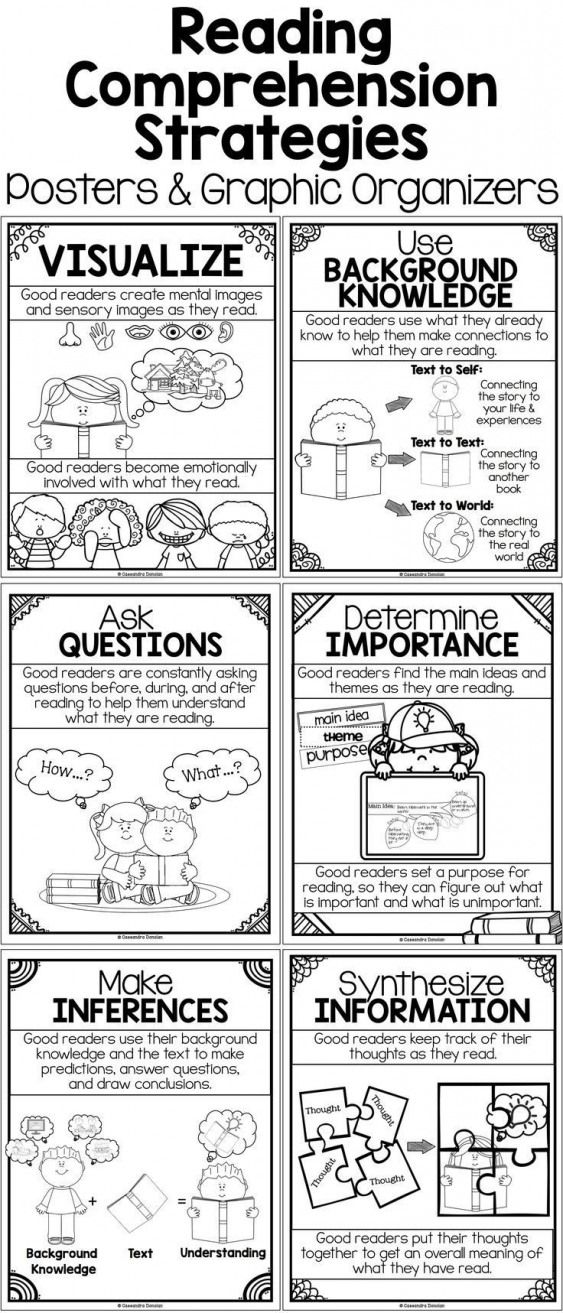 Considering the following when observing the students’ use of the strategy:
Considering the following when observing the students’ use of the strategy:
Are students making predictions prompted or unprompted?
Can students support their predictions with text evidence?
Do students draw on personal experiences to inform their predictions?
Are students monitoring if their predictions were correct or incorrect?
Are the students’ predictions logical? Do they make sense to the story?
Finally, having a rubric written in kid-friendly language is especially helpful when providing feedback to a student on their ability to make predictions. The rubric can provide clear guidelines on how to make predictions while reading.
<< Back to categories
Want to get your hands on the Predicting LINKtivity®?
Join the LINKtivity® Learning Membership and start using this ready-to-go resource for predicting that includes:
a teacher guide
a student LINKtivity
a student recording sheet
a student-friendly rubric
Get access to the Predicting LINKtivity® PLUS all the other reading comprehension strategies inside of LINKtivity® Learning - an ALL-ACCESS pass to every single LINKtivity® created (INCLUDING all 7 reading strategy LINKtivities!)
Learn more about LINKtivity® Learning
<< Back to categories
Reading, Free ResourcesThe Classroom Nookpredicting, Reading Strategy
0 LikesLibrary Navigator: Strategies for Reading
Strategy is a set of methods arranged in a certain sequence and aimed at reaching certain targets.
Strategy reading - the path and program of action of the reader. Selected for a specific purpose text. The term was born at the dawn of psycholinguistics in the works of K. Goodman and P. Kolers.
Strategies readings can be used in discussions and commented readings, in library lessons, become part of the interactive elements cultural event.
one. Classification of reading strategies:
| Feature | Subspecies | |
| By relation to text | Pretext | Cerebral assault Landmarks anticipations dissection question preliminary questions Battery questions Glossary Alphabet round table Reading in a circle Read and speak out Theatre at the microphone |
| Text | Timeout Reading with stops Reading in litters Strategies guided reading Strategy reader responses | |
| Posttext | Battery questions after text Where answer? Checking sheet | |
| Complex (all above steps) | ||
| By attitude to mental activity | cognitive (with one type of text) | Intellectual-cognitive Information and cognitive Cognitive-mnemonic |
| Metacognitive (with all types) | Ask author reasoning out loud Pre-, post-doc assignments Verification sheets Definition difficulty understanding | |
| Strategy speech activity | Audition Speaking Letters | Communication Reflective |
2. Description of reading strategies
Description of reading strategies
| Strategy name | Definition |
| 1. Pre-text strategies activities | Update previous knowledge and experience related to the text. |
| 1.1. Brainstorming | Readers name associations, arising from the title of the text. |
| 1.2. Anticipation landmarks | The librarian prepares some judgments related to the text and invites readers to mark those with which they agree. |
| 1.3. Battery of questions | Identification, through surveys, readers' knowledge of the topic of the text. |
| 1.4.Round table alphabet | Readers receive a sheet divided into cells, each with a letter of the alphabet. A task - write in each of them a word related to the topic of the text. |
| 1.5. Reading in a circle | Alternate reading aloud for better understanding and enhancing the attention of readers. |
| 1.6 Read aloud and speak out | Paired Reading Strategy: First the participant reads aloud, and the second speaks on a certain librarian topic (make a comment, raise a question, predict the continuation, identify difficult or incomprehensible). |
| 1.7. Theater at the microphone | Role reading. |
| 2. Texting strategies activities | Called to do the reading interactive, teach how to combine parts of the text into a single whole, conduct monitoring understanding of the content of the text. |
| 2.1. Timeout | The librarian determines the time for reading, then readers retell the content of the text in pairs, summarize or make predictions about future developments. |
| 2. | After reading the passage, the reader answers questions from the librarian. |
| 2.3 Reading with marks | The reader makes notes: understood, I don't understand, we need to discuss. The strategy is aimed at reflecting one's understanding text. |
| 2.5. Directed strategy reading | Separate passages of text are read sequentially with stops for discussion on issues that offered to young readers by adults. |
| 2.6. Reader strategy responses | Recording reader responses to questions about the main events of the story, their nature, the problems of the characters, the climax and plot organization. |
| 3. Post-text strategies | Thinking about the text and doing assignments. |
| 3.1. Battery of questions after text | Issues related to understanding text and its critical evaluation. |
| 3.2. Where's the answer? | Finding an answer to a question in text, between lines, matching different parts of the text |
| 3. | Reader at home or in the library answers the questions of the "checklist" compiled by the librarian. |
| 4.Cognitive strategies | Assume reflection readable text. The strategy is suitable for reading educational scientific texts. |
| 4.1.Intellectual-cognitive | Highlighting while reading key words, concepts, establishing connections and grouping, classification, induction and deduction. |
| 4.2. Information-cognitive | Search for specific information in text according to the given criteria. |
| 4.3 Cognitive-mnemonic | Assumes an organized memorization using keywords, schemes. Also includes strategies "landmarks anticipation of information" and "K-W-L" - "I know - I want to know - I found out." |
| 5. Metacognitive Strategies | Knowledge through the mechanism of self cognition: monitoring and self-monitoring of text comprehension, search for problematic questions in the text, tasks. Effective when working with any text and may include pre-, post- and text activities. |
| 5.1. Ask the author | The reader learns to think while reading by searching for answers to the difficult ones previously marked by the librarian places in the text. |
| 6. Communication Strategies | Interaction with the author and by other readers. Includes "G-S-R" strategies (abstract - a brief retelling - retelling), "RAFT" (reading taking into account the chosen role). More details - in the educational and methodical allowances Reading+. Preparing teachers and librarians for implementation interdisciplinary program "Fundamentals of semantic reading and working with text": study method. allowance / ed.-comp. and scientific editor T. G. Galaktionova. - M.: RSHBA, 2018. - S. 53-55. |
| 7. Reflexive Strategies | Combine reading with stops and role play. The librarian distributes the roles of expert, reporter and observer between readers previously divided into three. |
Materials for scripting activities using reading strategies:
methodical recommendations for reading aloud [Electronic resource]: website // Samara Regional children's library. – Access mode: http://www.sodb.ru/node/486.
tricks semantic reading [Electronic resource]: website // Methodical workshop "Development and implementation of the semantic reading strategy in the educational space of the school on stage of the introduction of the Federal State Educational Standard LLC. – Access mode: https://sites.google.com/site/ucitelamv/home/klassifikacia-priemov-smyslovogo-ctenia.
Development semantic reading in the context of the implementation of the Federal State Educational Standards of the OO [Electronic resource]: a collection of abstracts international scientific and practical conference. April 7, 2016 / State autonomous educational institution of additional professional education "Institute for the Development of Education and Social Technologies". - Kurgan, 2016. - 156 p. - Access mode: http://kna-s6.edu.27.ru/files/uploads/docs/smuslchten/oput/megdunarodnaya_nauchno_prakticheskaya_konferentsiya.pdf.
Romanicheva, E. S. Reader. Reading. Book: dictionary / E.S. Romanicheva, G. V. Prantsova. – M.: Bibliomir, 2018. – 208 p.
Smetannikova, N. N. Education of the reader in a culture-creating model of education [Electronic resource]: website // Interregional Center for Library Cooperation. - Access mode: http://www.mcbs.ru/files/File/smetannikova(1). pdf.
pdf.
Strategies reading [Electronic resource]: site // Solnechny. – Access mode: http://www.selezneva-lichnost.ru/index.php/strategii-chteniya.
Reading with stops [Electronic resource]: blog // There is happiness! – Access mode: http://bdb100ktn.blogspot.com/2015/02/blog-post_27.html.
LIST SOURCES
1.
Zagashev AND ABOUT. Reading in the library. Strategy "Reading with stops" / I. O. Zagashev. - M.: Chistye Prudy, 2010. - 31 p.
2.
Prantsova GV, Modern reading strategies: theory and practice. meaningful reading and work with text: textbook / G. V. Prantsova, E.S. Romanichev. - 2nd ed., correct and additional - M. : FORUM, 2015. - 368 p.
3.
Read+. Preparation of teachers and librarians for the implementation of an interdisciplinary program "Fundamentals of semantic reading and working with text": textbook-method. allowance / auth.-stat. and scientific editor T. G. Galaktionova. – M.: RSHBA, 2018. – 164 p.
R. S. Sakharenkova
Methods for teaching the strategy of semantic reading and working with text
1. Introduction
systematization and speed of processing put theorists and practitioners of education in front of the need to develop new approaches to teaching reading.
Issues:
- children have a low reading speed, as a result of which they spend a lot of time preparing homework,
- they often do not understand the meaning of what they read due to reading errors and incorrect intonation,
- they cannot extract the necessary information from the proposed text, highlight the main thing in what they read,
- find it difficult to briefly retell the content,
- when doing independent work, tests of different levels, students make mistakes due to misunderstanding of the wording of the task,
- rarely refer to cognitive texts.
That is, a serious contradiction arises: on the one hand, the modern world brings down a huge amount of information on us, on the other hand, our children do not read much, do not have semantic reading skills, and do not know how to work with information.
It is not so important to read a lot, it is much more necessary to process what you have read in your mind in a quality manner. Having comprehended and structured the text in a certain way, it is much easier to convey its content and learn the main thing.
The current interdisciplinary curriculum, provided for by the new educational standards, is the program "Fundamentals of semantic reading and working with text." The program is aimed at forming and developing the foundations of reading competence necessary for students to implement their future plans, including continuing education and self-education, preparing for work and social activities. Today, reading, along with writing and computer skills, is one of the basic skills that allow you to work productively and communicate freely with different people. Reading is a universal skill: it is something taught and something through which one learns. As scientists have established, about 200 factors affect student performance. Factor #1 is reading skill, which has a far greater impact on academic performance than all of them combined. Research shows that in order to be competent in all subjects and later in life, a person needs to read 120-150 words per minute. This becomes a necessary condition for the success of working with information. Reading is the foundation of all educational outcomes.
2. Semantic reading in the context of the new Federal State Educational Standards
Federal standards include in the meta-subject results of OOP mastering as a mandatory component "mastering the skills of semantic reading of texts of various styles and genres in accordance with the goals and objectives."
Semantic reading is a type of reading aimed at understanding the semantic content of the text by the reader. For semantic understanding, it is not enough just to read the text, it is necessary to evaluate the information, respond to the content.
For semantic understanding, it is not enough just to read the text, it is necessary to evaluate the information, respond to the content.
In the concept of universal educational activities (Asmolov A.G., Burmenskaya G.V., Volodarskaya I.A., etc.) actions of semantic reading are distinguished, associated with:
tasks;
- definition of primary and secondary information;
- formulating the problem and the main idea of the text.
For semantic understanding, it is not enough just to read the text, it is necessary to evaluate the information, to respond to the content. The concept of "text" should be interpreted broadly. It can include not only words, but also visual images in the form of diagrams, figures, maps, tables, graphs.
Since reading is a meta-subject skill, its constituent parts will be in the structure of all universal educational activities:
- personal UUD includes reading motivation, learning motives, attitude towards oneself and school;
- into regulatory UUD - acceptance by the student of a learning task, arbitrary regulation of activity;
- in cognitive UUD - logical and abstract thinking, working memory, creative imagination, concentration, vocabulary volume.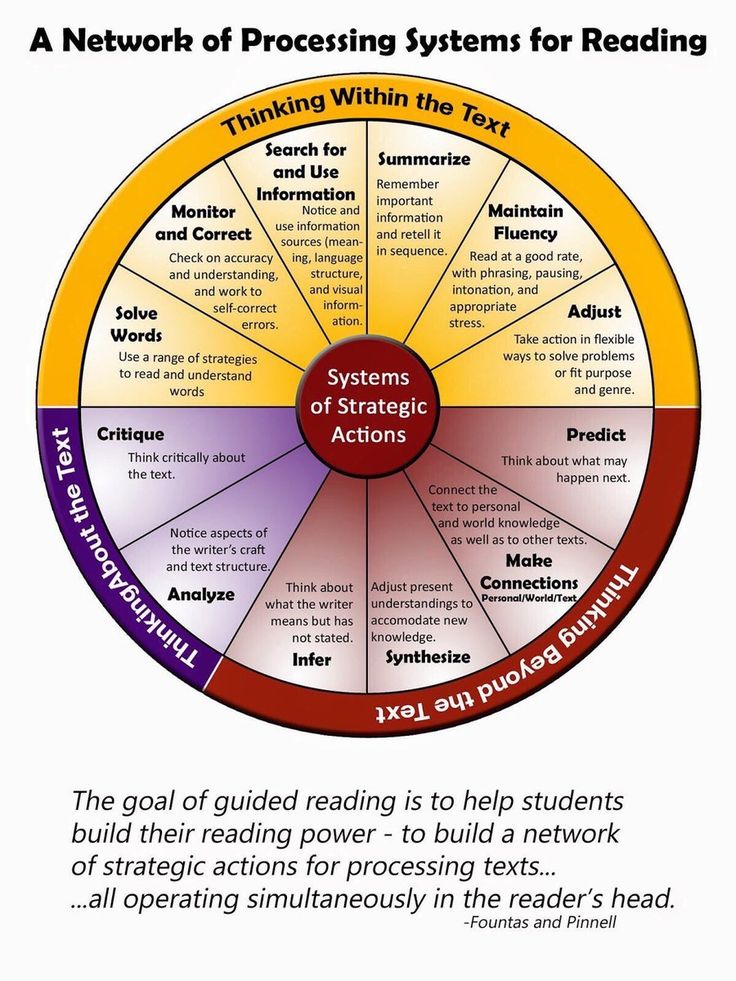
- in communicative UUD - the ability to organize and implement cooperation and cooperation with a teacher and peers, adequately convey information, display subject content.
The diagram shows groups of meta-subject results related to semantic reading.
3. Strategies for semantic reading
To work with the text at each stage, the reader chooses his own strategies. Learning strategies are a set of actions that a learner takes in order to facilitate learning, make it more effective, efficient, faster, more enjoyable, aim and bring learning activities closer to their own goals.0006
The term "reading strategies" was born at the dawn of psycholinguistics, and its appearance is associated with the work of Kenneth Goodman and Peter Kolers (70s). (slide 14) The most general definition of J. Bruner became fundamental for all subsequent works: “A strategy is a certain way of acquiring, storing and using information that serves to achieve certain goals in the sense that it should lead to certain results. ”
”
In case of success, the student remembers the ways of his actions, operations, resources used, transfers the strategy to other situations, makes it universal. The number of strategies and the frequency of their use are individual.
Strategy No. 1. Directed reading
Purpose: to form the ability to purposefully read the educational text. Ask questions and lead group discussions.
1. Update. Reception "Associative Bush": the teacher writes a keyword or title of the text, students express their associations one by one, the teacher writes down. The use of this technique allows you to update knowledge, motivate subsequent activities, activate the cognitive activity of students, set them up for work.
2. Pupils silently read a short text or part of a text, stopping at the indicated places.
3. The teacher asks a problematic question on what has been read.
4. The answers of several students are discussed in class.
5. The students make an assumption about the further development of the event.
Strategy #2. Reading in pairs - generalization in pairs
Purpose: to form the ability to highlight the main thing, summarize what was read in the form of a thesis, ask problematic questions.
1. The students silently read the text or part of the text chosen by the teacher.
2. The teacher puts the students in pairs and gives clear instructions. Each student alternately performs two roles: speaker - reads and summarizes the content in the form of one thesis; the respondent listens to the speaker and asks him two substantive questions. Next comes the role reversal.
3. The teacher invites all students to the discussion.
Strategy No. 3. Reading and asking
Purpose: to form the ability to work independently with printed information, formulate questions, work in pairs.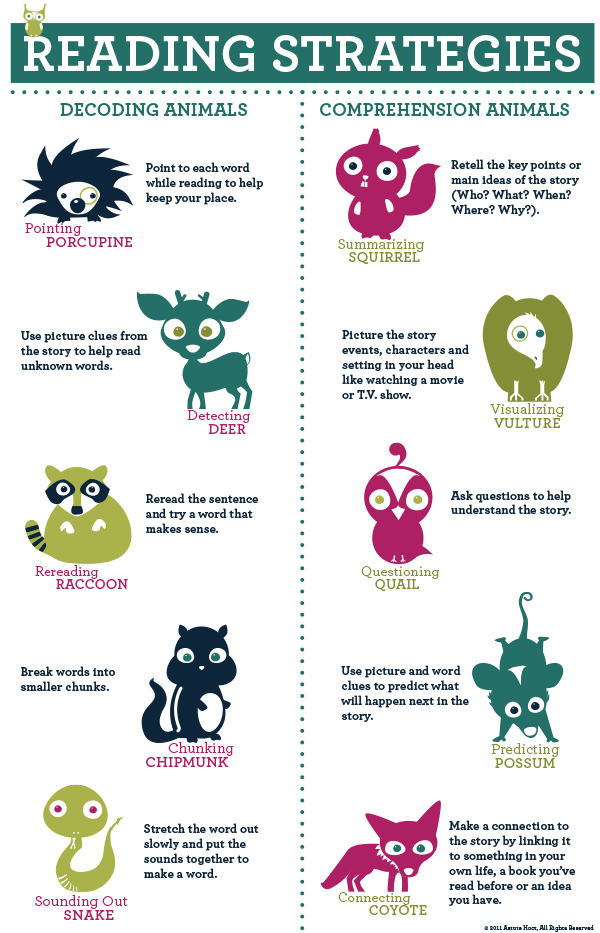
1. Students silently read the proposed text or part of the text chosen by the teacher.
2. The students work in pairs and discuss which keywords should be highlighted in the reading. (Which words occur most often in the text? How many times? Which words are in bold? Why?
If you read the text aloud, how would you make it clear that this sentence is the main thing? It is about highlighting the phrase voice, which hides an unobtrusive but reliable memorization.)
3. One of the students formulates a question using key words, the other answers it.
4. Discuss key words, questions and answers in class. Correction.
Strategy No. 4. Double entry diary
Purpose: to form the ability to ask questions while reading, critically evaluate information, compare what is read with one's own experience.
1. The teacher instructs the students to divide the notebook into two parts.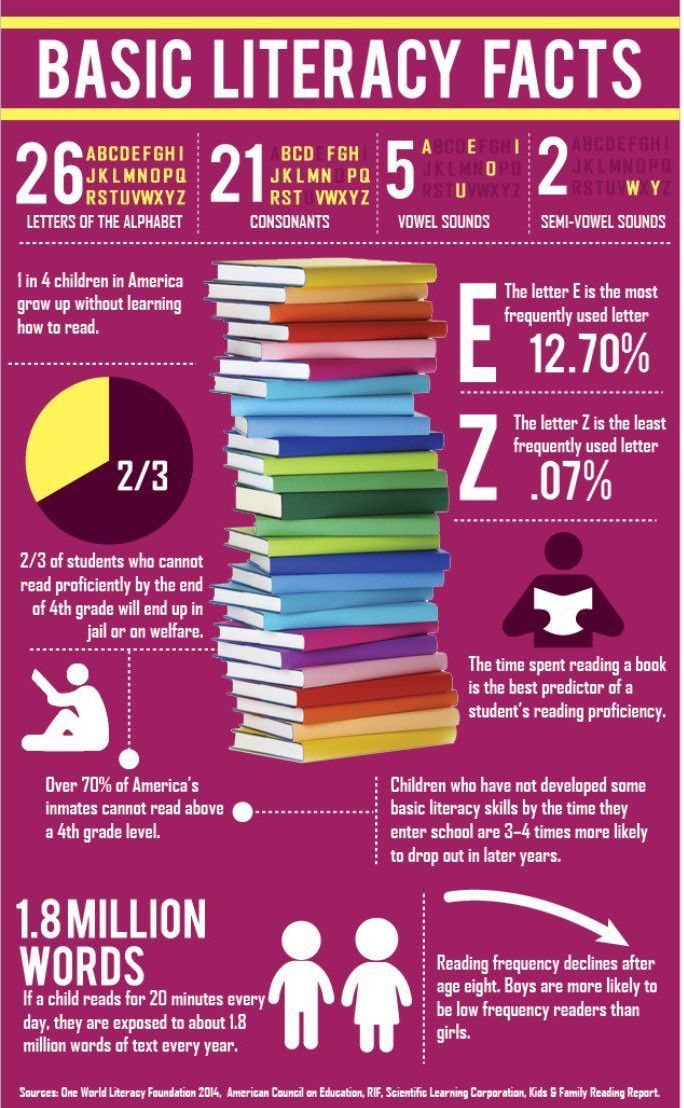
2. In the process of reading, students should write down on the left side the moments that struck, surprised, reminded of some facts, caused any associations; on the right - write a concise commentary: why this particular moment surprised you, what associations it caused, what thoughts it prompted.
Strategy No. 5. Reading with notes
Goal: to form the ability to read thoughtfully, evaluate information, formulate the author's thoughts in your own words.
The teacher gives the students the task to write information in the margins with icons according to the following algorithm:
- V Familiar information
- + New information
- - I thought (thought) otherwise
- ? This interested me (surprised), I want to know more
The essence of semantic reading strategies is that the strategy is related to choice, functions automatically at the unconscious level and is formed in the course of the development of cognitive activity.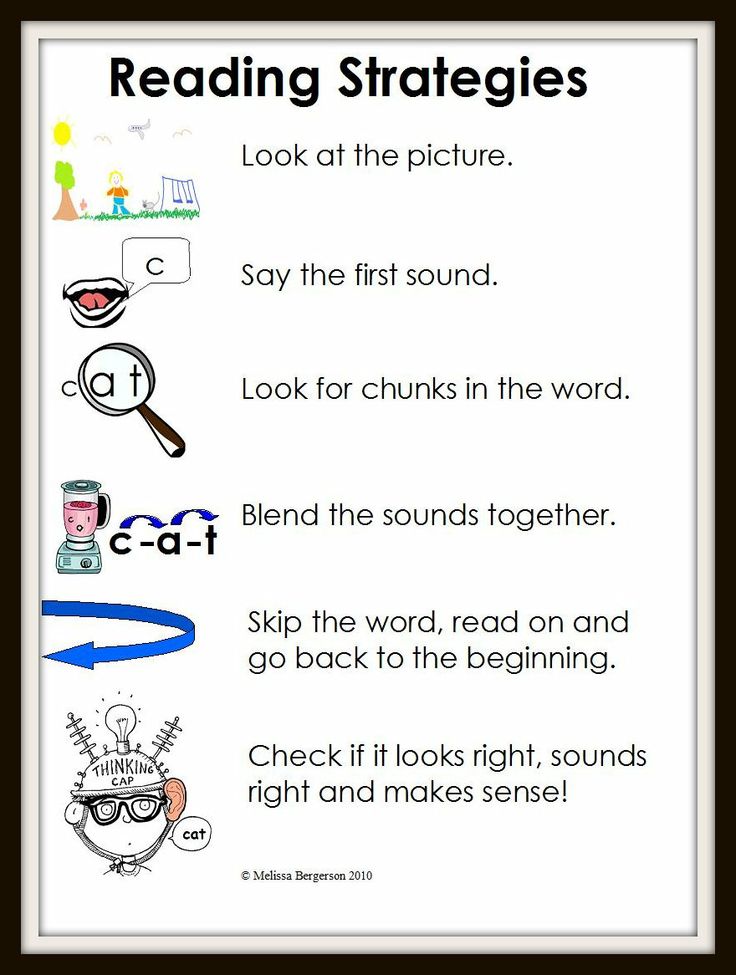 Teaching reading strategies includes the acquisition of skills:
Teaching reading strategies includes the acquisition of skills:
- Distinguishing types of message content - facts, opinions, judgments, assessments;
- recognition of the hierarchy of meanings within the text - the main idea, theme and its components;
- own understanding - the process of reflective perception of the cultural meaning of information.
Mastering strategies occurs mainly in groups or pairs, which allows students to develop not only speech, but also communicative competence.
4. Techniques for teaching the strategy of semantic reading and working with text
The strategy of semantic reading provides understanding of the text by mastering the techniques of mastering it at the stages before reading, during reading and after reading. Working with any text involves three stages: pre-text activity, text and post-text activity
Stage 1. Work with text before reading.
1. Anticipation (anticipation, anticipation of the upcoming reading). Determining the semantic, thematic, emotional orientation of the text, highlighting its heroes by the title of the work, the name of the author, key words, illustrations preceding the text based on the reader's experience.
Determining the semantic, thematic, emotional orientation of the text, highlighting its heroes by the title of the work, the name of the author, key words, illustrations preceding the text based on the reader's experience.
2. Setting the objectives of the lesson, taking into account the general (educational, motivational, emotional, psychological) readiness of students for work.
Purpose of stage 1: development of the most important reading skill, anticipation, that is, the ability to guess, predict the content of the text by title, author's name, illustration.
Methods of pre-text activity:
If earlier, according to the traditional method, only one task “Read the text” was given at the stage of pre-reading the text, and the main attention was paid to control of reading comprehension, now we know that the better organized the stage of pre-reading, the easier it is for the student to read the text and the higher the result achieved by him.
Pre-text orienting techniques are aimed at staging reading and, consequently, at choosing the type of reading, updating previous knowledge and experience, concepts and vocabulary of the text, as well as creating motivation for reading.
Most common tricks:
- Brainstorming
- Glossary
- "Landmarks of anticipation"
- Preliminary Questions
- "Dissection questions".
Brainstorming, Headline Forecast.
The goal is to update previous knowledge and experience related to the topic of the text.
The question is asked: what associations do you have about the stated topic?
Associations are written on the blackboard.
The teacher can add various information.
Reading text. Comparison of information with that learned from the text.
"Glossary"
The purpose of is to update and repeat the vocabulary related to the topic of the text.
The teacher says the title of the text, gives a list of words and offers to mark those that can be associated with the text.
Having finished reading the text, they return to these words (this will be a post-text strategy) and look at the meaning and use of the words used in the text.
"Landmarks of anticipation"
The purpose of is to update previous knowledge and experience related to the topic of the text. Students are given judgments. They should mark the ones they agree with. After reading, they mark them again. If the answer has changed, then the students explain why this happened (post-text strategy)
"Dissections of the Question"
The goal of is a semantic guess about the possible content of the text based on the analysis of its title. It is proposed to read the title of the text and divide it into semantic groups. What do you think the text will be about?
"Previous questions"
The purpose of is to update existing knowledge on the topic of the text.
Detailed reception algorithm:
1. Scan the text quickly. (Review reading.)
2. Answer the question posed in the title of the text.
Stage 2. Working with text while reading.
Purpose of stage 2: understanding of the text and creation of its reader's interpretation (interpretation, evaluation).
1. Primary reading of the text. Independent reading in the classroom or reading-listening, or combined reading (at the choice of the teacher) in accordance with the characteristics of the text, age and individual abilities of students. Identification of primary perception (with the help of a conversation, fixing primary impressions, related arts - at the teacher's choice).
2.Rereading the text. Slow "thoughtful" repeated reading (of the entire text or its individual fragments). Text analysis. Statement of a clarifying question for each semantic part.
3. Conversation on the content of the text. Summary of what has been read. Identification of the hidden meaning of the work, if any. Statement of generalizing questions to the text, both by the teacher and by the children. Appeal (if necessary) to individual fragments of the text.
Identification of the hidden meaning of the work, if any. Statement of generalizing questions to the text, both by the teacher and by the children. Appeal (if necessary) to individual fragments of the text.
Text activities include:
- Read aloud
- "Reading to yourself with questions"
- Stop Reading
- "Reading to yourself with a mark"
"Reading aloud"
The goal is to check the understanding of the text read aloud .
1. Reading text paragraph by paragraph. The task is to read with understanding, the task of the listeners is to ask the reader questions to check whether he understands the text being read.
2. Listeners ask questions about the content of the text, the reader answers. If his answer is incorrect or inaccurate, the listeners correct him.
“Reading to yourself with questions”
The goal is to teach you to read the text thoughtfully by asking yourself increasingly difficult questions .
1. Reading the first paragraph. Questions are being asked.
2. Reading the second paragraph to yourself. Work in pairs. One student asks questions, the other answers.
3. Reading the third paragraph. They change roles. They ask questions and answer.
Stop Reading
Goals - managing the process of understanding the text while reading it.
Reading the text with stops during which questions are asked. Some of them are aimed at testing understanding, others - at predicting the content of the following passage.
"Reading to yourself with notes" ("Insert")
The goal is to monitor the understanding of the text being read and its critical analysis . This strategy is most often used to work with complex scientific texts. It is used to stimulate more careful reading. Reading becomes an exciting journey.
1. Individual reading.
While reading, the student makes notes in the text:
- V – already knew;
- + - new;
- - thought differently;
- ? - I do not understand, there are questions.

2. Reading, the second time, fill in the table, systematizing the material.
| Already knew (V) | Learned something new (+) | Thought otherwise (–) | Questions (?) |
Records - keywords, phrases. After completing the table, students will have a mini-outline. After the students fill in the table, we summarize the results of the work in the conversation mode. If the students have any questions, then I answer them, having previously found out if one of the students can answer the question that has arisen. This technique contributes to the development of the ability to classify, systematize incoming information, highlight the new.
“Creating a question plan”.
The student carries out a semantic grouping of the text, highlights the strong points, divides the text into semantic parts and titles each part with a key question
Stage 3. Working with text after reading .
Purpose: correction of the reader's interpretation in accordance with the author's intention
1. Conceptual (semantic) conversation on the text. Collective discussion of the read, discussion. Correlation of readers' interpretations (interpretations, evaluations) of the work with the author's position. Identification and formulation of the main idea of the text or the totality of its main meanings.
2. Acquaintance with the writer. Story about a writer. Talk about the personality of the writer. Working with textbook materials, additional sources.
3. Work with the title, illustrations. Discussing the meaning of the title. Referring students to ready-made illustrations. Correlation of the artist's vision with the reader's idea.
Correlation of the artist's vision with the reader's idea.
4. Creative tasks based on any area of students' reading activity (emotions, imagination, comprehension of content, artistic
Post-text activities.
- "Relationship between question and answer"
- "Time out"
- "Checklist"
- "Questions after the text"
"Relationship between question and answer"
The goal is to teach understanding of the text . One of the most effective post-text techniques. It differs from the rest in that it teaches the process of understanding the text, and does not control the result (understood - did not understand), shows the need to search for the location of the answer.
The answer to the question can be in the text or in the reader's word. If the answer is in the text, it can be in one sentence of the text or in several of its parts. To answer the question, you need to find the exact answer in one sentence of the text. If it is contained in several parts of the text, such an answer must be formulated by connecting them.
If it is contained in several parts of the text, such an answer must be formulated by connecting them.
If the answer is in the reader's head, then in one case the reader composes it by connecting what the author says between the lines or in indirect form and how the reader himself interprets the words of the author. In another case, the answer is outside the text and the reader is looking for it in his knowledge.
“Time out”
Objectives - self-test and assessment of understanding of the text by discussing it in pairs and in a group.
Reception implementation algorithm:
1. Reading the first part of the text. Work in pairs.
2. They ask each other clarifying questions. They answer them. If there is no confidence in the correctness of the answer, questions are submitted for discussion by the whole group after the completion of the work with the text.
Checklist
This strategy is quite flexible. It lays down the conditions for the qualitative performance of any task. The “checklist” is compiled by the teacher for students at the first stages of applying the strategy.
It lays down the conditions for the qualitative performance of any task. The “checklist” is compiled by the teacher for students at the first stages of applying the strategy.
Checklist "Brief retelling":
1. The main idea of the text is named. (Yes/No.)
2. The main thoughts of the text and the main details are named. (Yes/No.)
3. There is a logical and semantic structure of the text. (Yes/No.)
4. There are necessary means of communication that unite the main ideas of the text. (Yes/No.)
5. The content is presented in one's own words (language means) while maintaining the lexical units of the author's text. (Yes/No.)
"Questions after the text"
The classification of questions, known as the "Taxonomy of questions", involves a balance between groups of questions to:
- the factual information of the text, presented verbally;
- subtext information hidden between lines, in subtext;
- conceptual information, often outside the text.
To these three groups of questions today add the fourth - a group of evaluative, reflective questions related to the critical analysis of the text.
"Thin" and "thick" questions
After studying the topic, students are asked to formulate three "thin" and three "thick" questions related to the material covered. They then quiz each other using tables of "thick" and "thin" questions.
| Thick questions | Subtle questions |
| Explain why….? | Who..? What…? When…? |
- Read the text.
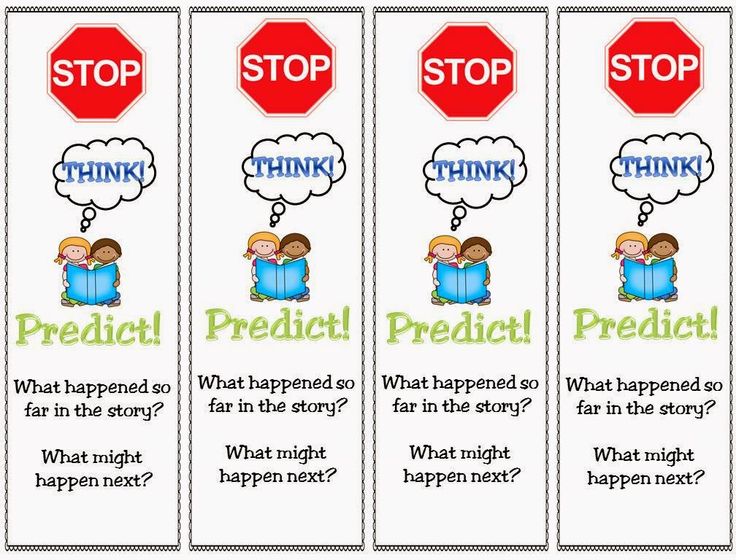
- What words occur most often in the text? How many times?
- Which words are in bold? Why?
- If you were to read the text aloud, how would you make it clear that this sentence is the main one?
- Noun (subject).
- Two adjectives (description)
- Three verbs (action).

- Four-word phrase (description).
- Noun (paraphrasing of the topic).
- How many paragraphs of the text?
- Pay attention to the words in thinned and bold type.
- Write out keywords.
- Coordinating conjunctions
- Intonation
- general minor member
- Explanatory words
- Comma
- Semicolon
- Dash
- No comma
- Reading 1 paragraph.
- We ask questions to the reader, he answers them.
- Reading in pairs to yourself 2 paragraphs, one student asks a question - the other answers.
- Reading 3, 4 paragraphs - students change roles.
- Give an example of a complex sentence, give a description according to the plan, draw up a diagram;
- make a mind map.
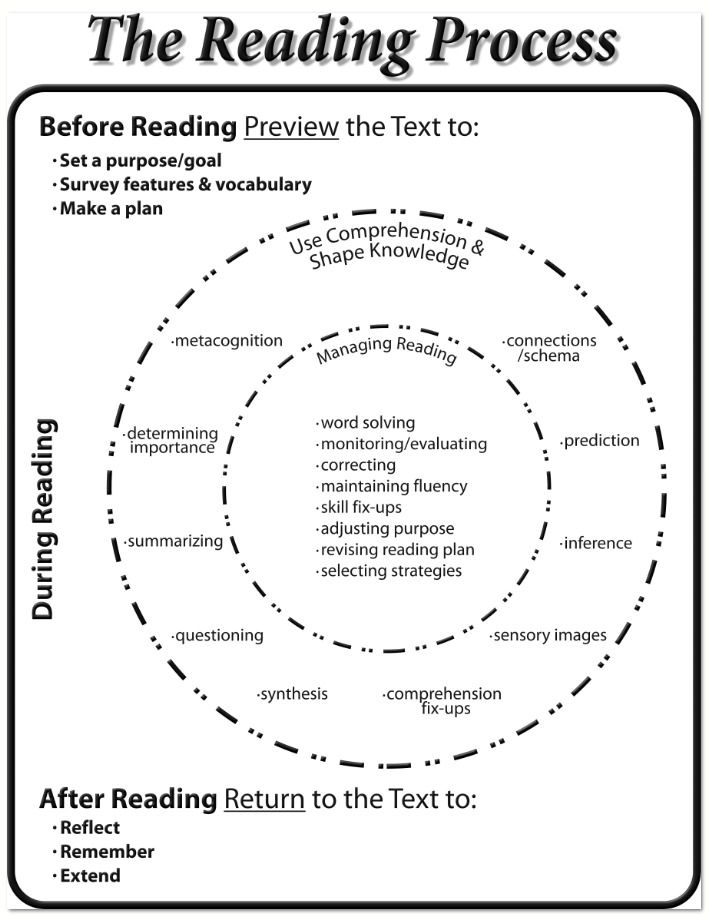
Question Tree
Crown - what? where? when? Barrel - why? How? Could you? Roots - how to relate the text to life? With current events? What is the author trying to show?
"Bloom's Cube" (Benjamin Bloom is a famous American teacher, author of many pedagogical strategies = technician).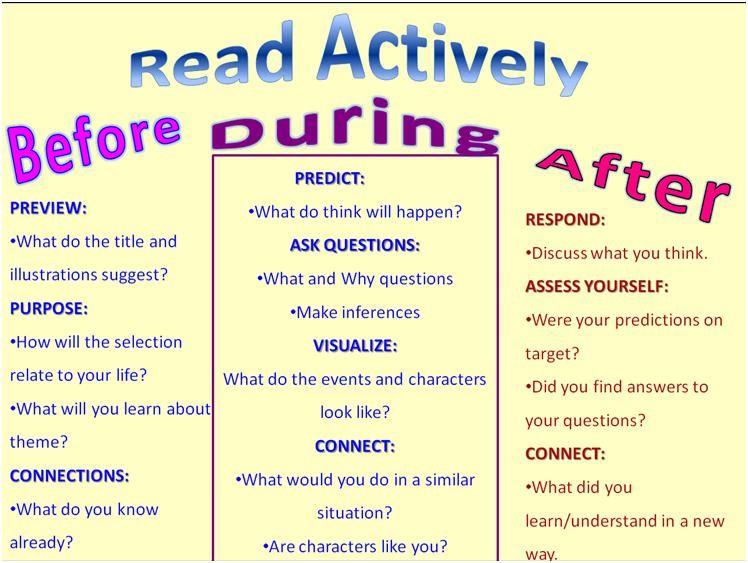
The beginnings of the questions are written on the sides of the cube: “Why?”, “Explain”, “Name”, “Suggest”, “Think up”, “Share”. The teacher or student rolls the die.
It is necessary to formulate a question to the educational material on the side on which the cube fell.
The question "Name" is aimed at the level of reproduction, that is, the simple reproduction of knowledge.
The question "Why" - the student in this case must find cause-and-effect relationships, describe the processes that occur with a particular object or phenomenon.
Explain question - the student uses concepts and principles in new situations.
Question Tree
Options for working with text.
"Questions to the text of the textbook"
The strategy allows you to form the ability to work independently with printed information, formulate questions, work in pairs.
We are talking about highlighting a phrase with your voice. Here lies an unobtrusive but reliable memorization.
Cluster
I use clusters for structuring and systematizing material. A cluster is a way of graphic organization of educational material, the essence of which is that in the middle of the sheet the main word (idea, topic) is written or sketched, and ideas (words, pictures) associated with it are fixed on the sides of it.
"Keywords"
These are words that can be used to compose a story or definitions of a certain concept.
True and False Statements
has a universal technique that contributes to the actualization of students' knowledge and the activation of mental activity.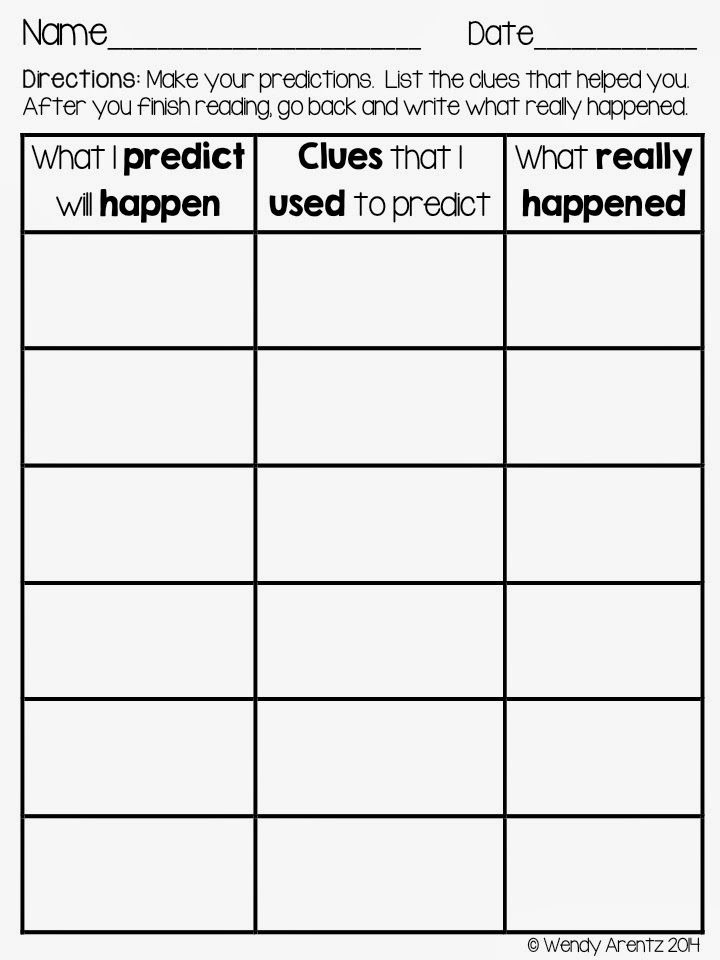 This technique makes it possible to quickly include children in mental activity and it is logical to proceed to the study of the topic of the lesson. Reception forms the ability to assess the situation or facts, the ability to analyze information, the ability to reflect one's opinion. Children are invited to express their attitude to a number of statements according to the rule: true - "+", not true - "-".
This technique makes it possible to quickly include children in mental activity and it is logical to proceed to the study of the topic of the lesson. Reception forms the ability to assess the situation or facts, the ability to analyze information, the ability to reflect one's opinion. Children are invited to express their attitude to a number of statements according to the rule: true - "+", not true - "-".
"Do you believe..."
It is carried out in order to arouse interest in the study of the topic and create a positive motivation for independent study of the text on this topic.
Conducted at the beginning of the lesson, after the announcement of the topic.
Cinquain
Develops the ability of students to highlight key concepts in the reading, the main ideas, synthesize the knowledge gained and show creativity.
Sinkwine structure:
"Mental maps" (graphic technique for organizing text),
Mind mapping is a mind visualization technique. The applications of mental maps are very diverse - for example, they can be used to fix, understand and remember the content of a book or text, generate and write down ideas, understand a new topic for yourself, prepare for making a decision.
In the center of a landscape sheet, one word indicates the theme, which is enclosed in a closed outline. Branches are drawn from it, on which keywords are located. Sub-branches are added to branches until the topic is exhausted.
Mind maps activate memory. Lists, solid text, trees, and diagrams are the same. Mind maps, on the other hand, use every possible means to activate perception through diversity: different line weights, different colors of branches, precisely chosen keywords that are personally meaningful to you, the use of images and symbols.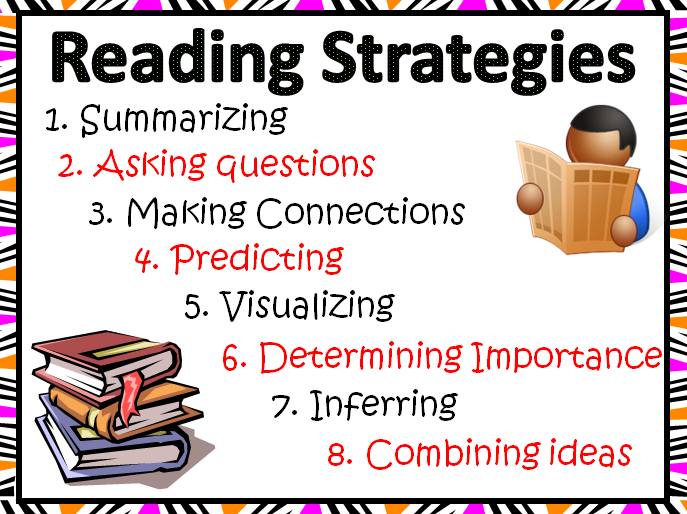 The technique of mental maps helps not only to organize and organize information, but also to better perceive, understand, remember and associate it.
The technique of mental maps helps not only to organize and organize information, but also to better perceive, understand, remember and associate it.
5. Diagnosing educational outcomes using semantic reading techniques
The network project "Techniques of Semantic Reading" [1] describes the model of V.V. Pikan, in which all cognitive levels are illustrated by exemplary examples of key questions and tasks that make it possible to diagnose the quality of mastering knowledge and ways of students' activities. Each of the cognitive levels (knowledge, understanding, application, generalization and systematization, value attitude) is assigned the number of points received for completing the tasks of the mastered level. The table below shows examples of questions and tasks, assessment criteria.
| Cognitive levels and assessment criteria | Sample key questions and tasks (beginning of wording) |
| Knowledge - 1 point | Name. |
| Comprehension - 2 points | Do you understand… Explain the relationship. Why ... Connect in semantic pairs .... Show on the graph... |
| Application - according to sample 3 b. | Make an offer…. Identify Traits character…. Apply the appropriate rule.... Compare…. Draw conclusions.... Present your point of view... |
| Generalization and systematization | Make a summary…. Make a table. |
| Value attitude - 2-10 b. | What does it matter…. What do you think…. Do you like…. |
6. Implementation of semantic reading technology techniques
1. Working with text before reading. Reception dissection question.
It is proposed to read the title of the paragraph "Compound sentence", the title of the scientific style text, and divide it into semantic groups; answer the question: what do you think the text will be about?
2. Working with text while reading.
Primary reading . Review reading or introductory reading:
1. Compound
2. Communication
3.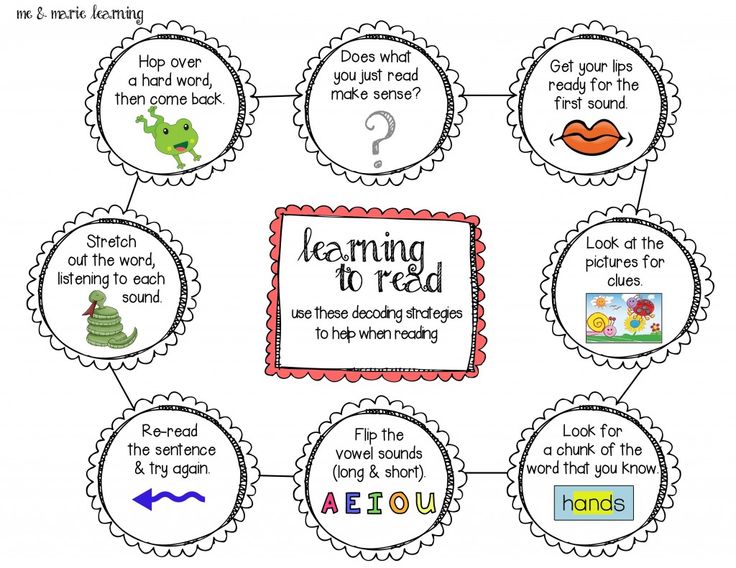 Additional communications
Additional communications
4. Punctuation marks
Learning reading . Rereading text
3. Work with the text after reading.
Work in groups: 1 group, using keywords, makes up a story about a compound sentence; Group 2, based on the plan for syntactic analysis of a simple sentence, draws up a plan for characterizing a complex sentence.
General job:
Fig.1. Mind map "Compound sentence" of a 9th grade student Samara D.
7. Conclusion
Semantic reading forms cognitive interest, the ability to compare facts and draw conclusions, activates the imagination, develops speech, thinking, and also teaches how to work with information. The active implementation of semantic reading strategies, technologies by all teachers of various academic disciplines will make our graduates full members of the new information society.
References and references
- Project "Semantic Reading Techniques" Auth. Dozmorova E.V., Director of the Center for Innovations in Education of the Faculty of Education and Science of the TSPU, Ph.D. - https://www.planeta.tspu.ru/files/file/doc/1464065663.pdf
- Federal State Educational Standard for Primary General Education // http://standart.edu.ru/catalog.aspx?CatalogId=959.

Learn more

 To introduce this reading strategy, teachers can hand out photographs from either a newspaper or a magazine. Students will then make a prediction with the evidence from the picture, their prior knowledge, or examples from their own experiences. Teachers can also create a prediction pail. When introducing a new story, students first take a picture walk and then make a prediction based on the title, illustrations, and diagrams. This allows students to use clues and evidence from the text to make accurate predictions. The children then write their predictions on a slip of paper and put them in the pail. Next, students read the story within their small reading groups. After the story is completed, they are able to share their predictions and make connections to the other responses that were shared.
To introduce this reading strategy, teachers can hand out photographs from either a newspaper or a magazine. Students will then make a prediction with the evidence from the picture, their prior knowledge, or examples from their own experiences. Teachers can also create a prediction pail. When introducing a new story, students first take a picture walk and then make a prediction based on the title, illustrations, and diagrams. This allows students to use clues and evidence from the text to make accurate predictions. The children then write their predictions on a slip of paper and put them in the pail. Next, students read the story within their small reading groups. After the story is completed, they are able to share their predictions and make connections to the other responses that were shared.  From this information, students will be able to make a prediction with the data that they collected to confirm their answer as they justify their reasoning.
From this information, students will be able to make a prediction with the data that they collected to confirm their answer as they justify their reasoning.  When reading, there is a revision and explanation of the marks.
When reading, there is a revision and explanation of the marks. 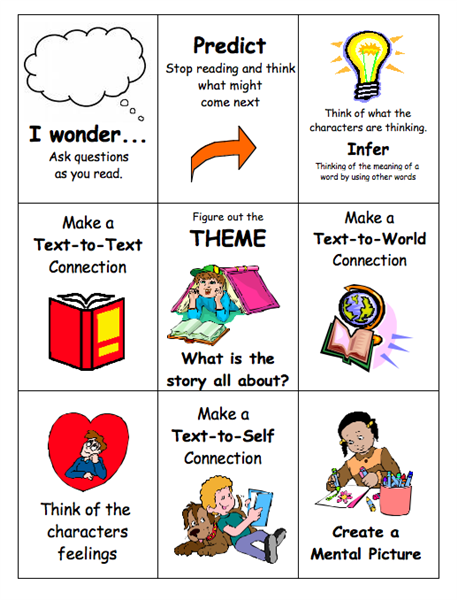 The strategy allows you to guide the discussion text while reading.
The strategy allows you to guide the discussion text while reading. 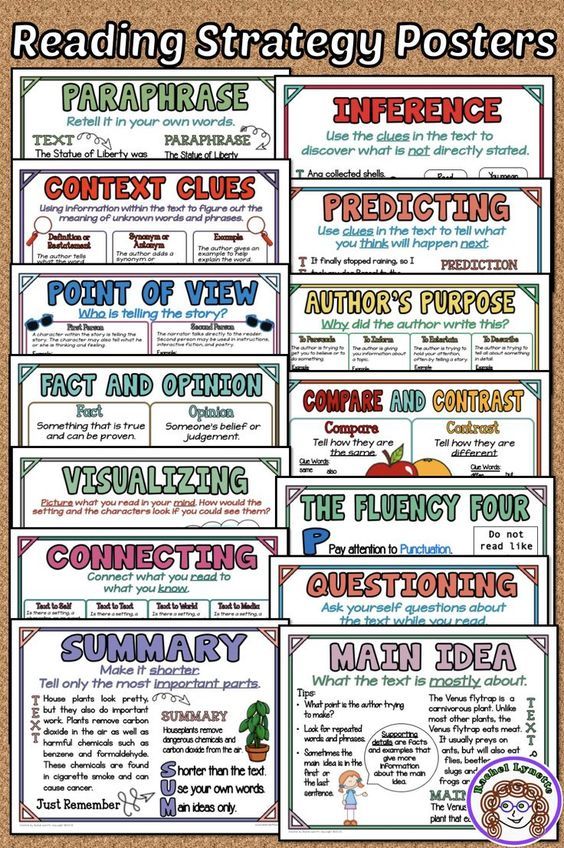 2 Reading with stops
2 Reading with stops 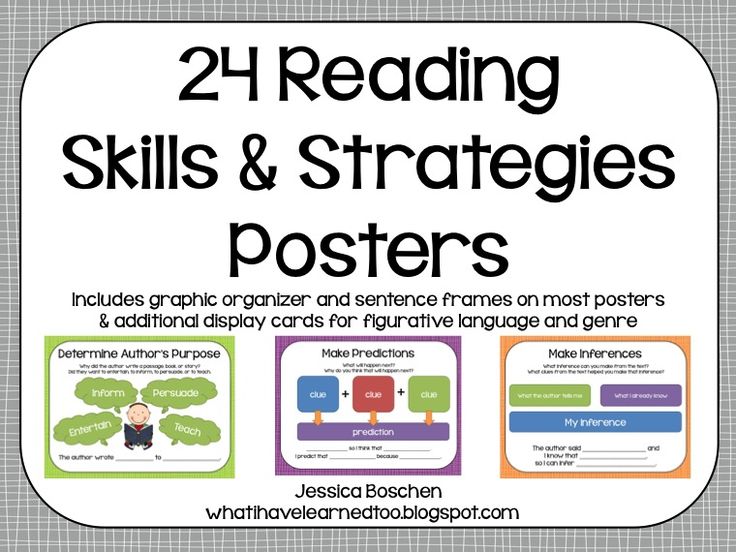 The recording form is given in the textbook Prantsova G.V., Modern reading strategies: theory and practice. Semantic reading and work with text: textbook / G. V. Prantsova, E.S. Romanichev. - 2nd ed., corrected. and additional - M . : FORUM, 2015. - S. 62-63.
The recording form is given in the textbook Prantsova G.V., Modern reading strategies: theory and practice. Semantic reading and work with text: textbook / G. V. Prantsova, E.S. Romanichev. - 2nd ed., corrected. and additional - M . : FORUM, 2015. - S. 62-63. 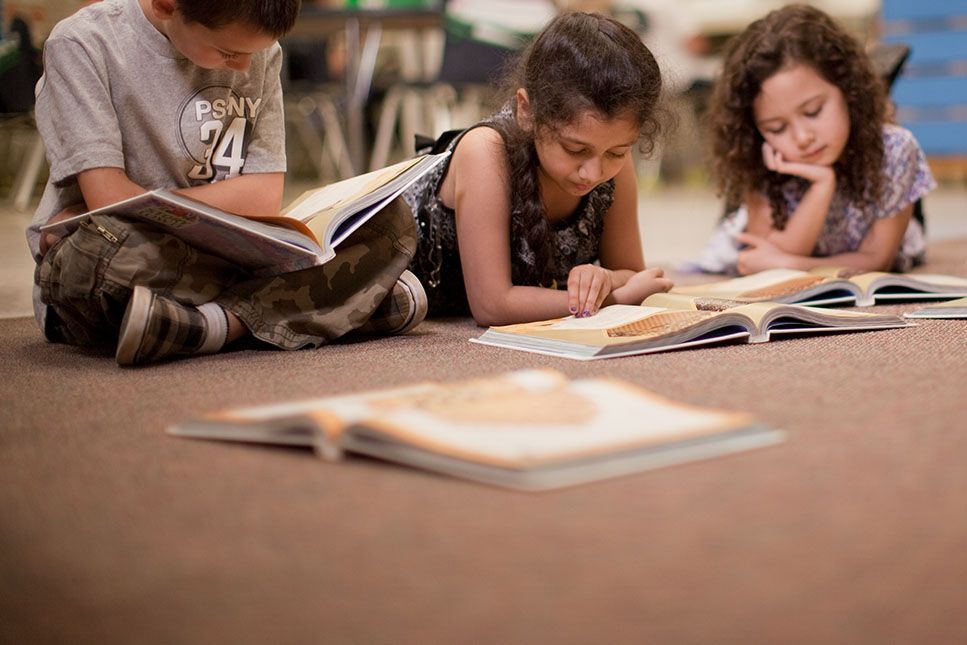 3. Checklist
3. Checklist 
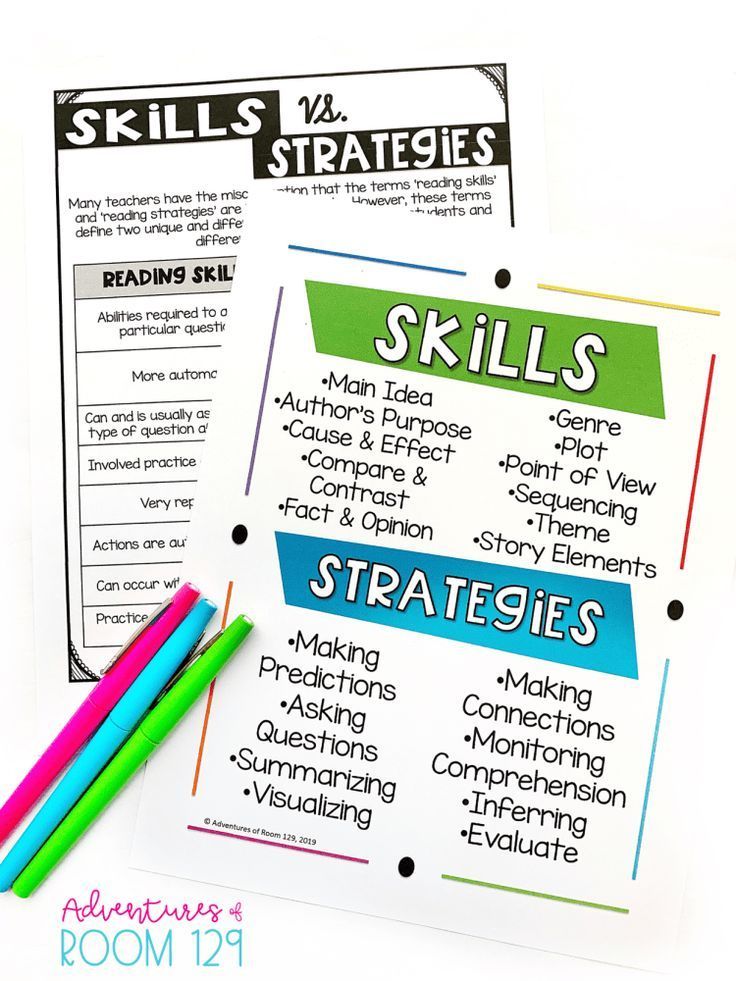
 The task is to speak out reading a piece of text according to the role. For example, an expert presents the content of the material in the categories "interesting, known, difficult, unclear", the reporter summarizes what the expert said in the form of indirect speech, the observer comments on their work.
The task is to speak out reading a piece of text according to the role. For example, an expert presents the content of the material in the categories "interesting, known, difficult, unclear", the reporter summarizes what the expert said in the form of indirect speech, the observer comments on their work.  .., Define..., Formulate... . Retell ... List .... Choose the correct answer…. Complete the word…. Show…, Find out...etc.
.., Define..., Formulate... . Retell ... List .... Choose the correct answer…. Complete the word…. Show…, Find out...etc. 